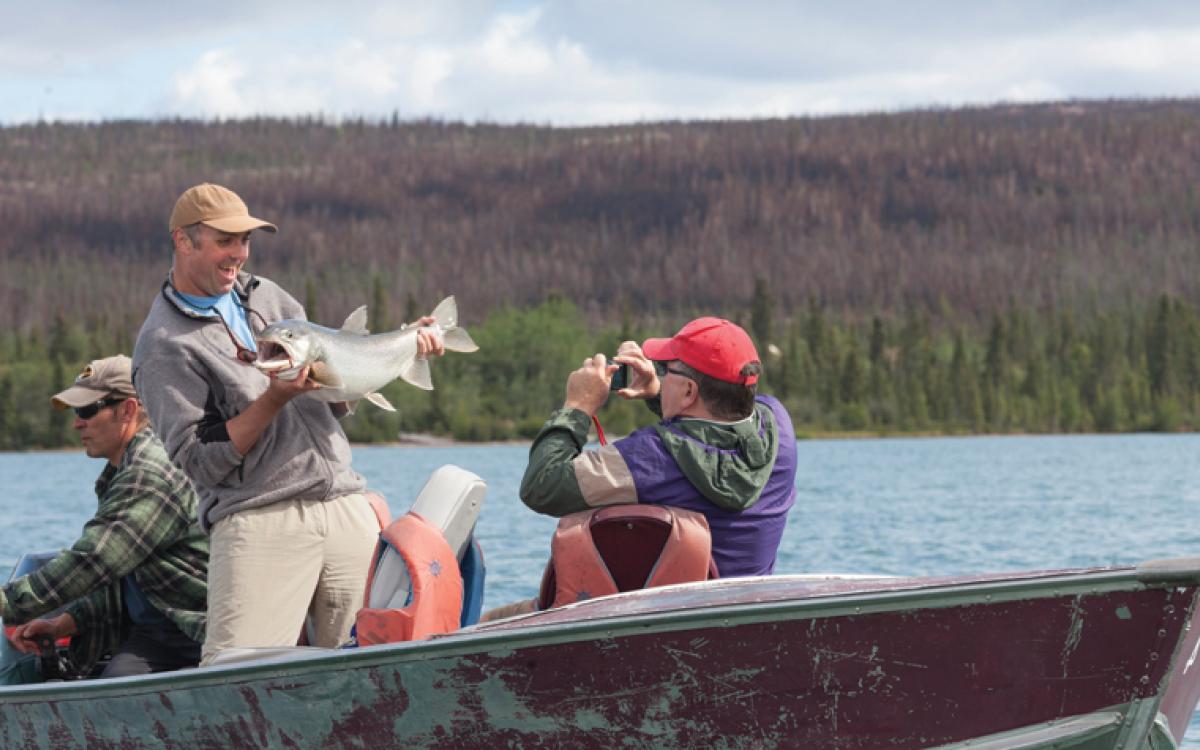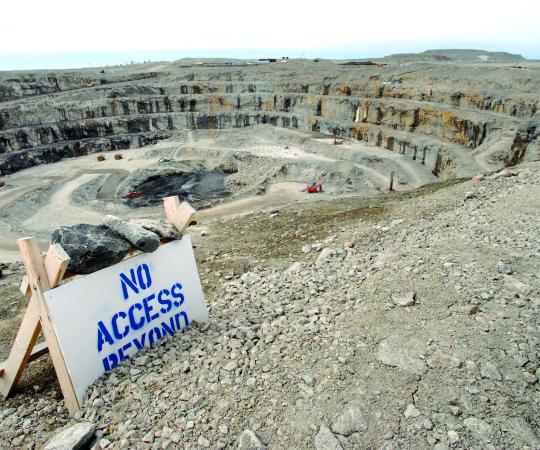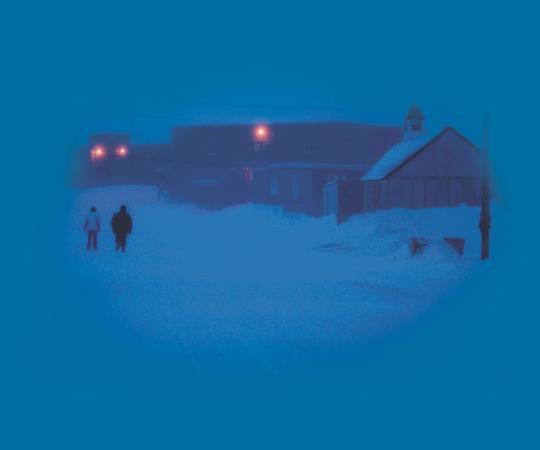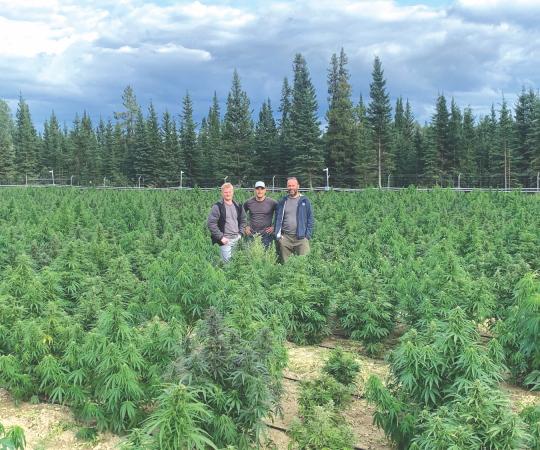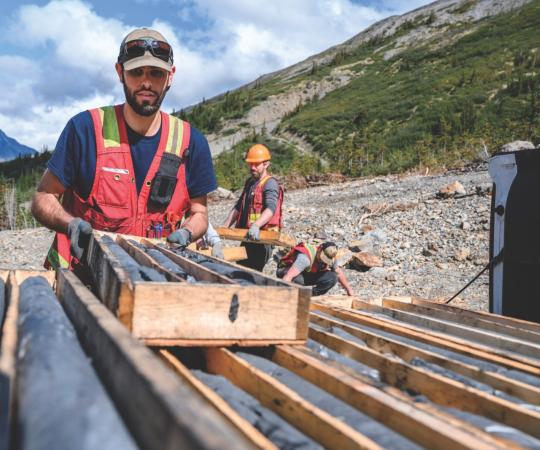Arctic Haven Wilderness Lodge, nestled on the remote shores of Ennadai Lake, in the southeast corner of Nunavut was originally a fishing lodge. “About a pure fishing lodge as it gets,” says Tessum Weber, guest experience manager. “People show up, they got their boat and their guide and whatnot, they do their week of fishing, and then they leave.”
But ever since Weber’s father Richard joined forces with business magnate Aziz Kheraj of Resolute Bay in 2010 to run the lodge, they’ve shifted focus. Cashing in on their ideal location, they began to offer unique wildlife viewing opportunities: thousands of caribou migrate past the lodge in the spring and fall. Bird species in the area are abundant and there are wolf packs, grizzly bears and black bears that roam those parts. The colours of the tundra are amazing too.
Why the drastic move? Well, you’ve got to change with the times. Canada’s North is dotted with isolated fishing outposts, most of which can only be reached by floatplane. For decades they’ve lured devoted southern anglers who were willing to spend thousands of dollars to land trophy pike, trout and char teeming in Northern waters—the kinds of fish you brag about around a campfire, over beers, or a boardroom table. At one point, Plummer’s Arctic lodges boasted U.S. Presidents and Canadian royalty—okay, Wayne Gretzky—as clients, landing jam-packed Boeing 737s on its own private airstrip on the coast of Great Slave Lake.
Most lodges still attract the big spenders—many trip packages cost upwards of $1,000 per day, not including alcohol. And these lodges still generally count on middle to upper-middle class, older (often American) men as guests. But that demographic is dying off—literally—and there doesn’t appear to be a new generation jumping up to replace them.

Nowadays, people have so many potential destinations to travel to and with Google, they can do piles of research beforehand, says Tessum. And if they’re coming North, they want to do it all. “They want to see the best of the Arctic.” That doesn’t mean Arctic Haven’s guests don’t want to fish, it just might mean that they won’t want to spend an entire week fishing. (Though there are some that come just for that—and they still do cater to those people, “but it’s a very small market,” says Tessum.) “The majority of the people who want to visit the Arctic, they want to go out there. They want to hike, they want to sea kayak, they want to see history, they want to see wildlife, they want to get out and see the landscapes.”
Business has been good for the Webers. Heading into their fourth season with this new vision, their bookings are growing. And they are starting to see younger visitors too—a result of their focus on wildlife, landscape and adventure tourism, rather than strictly fishing.
But across the North, this demographic shift has caused some lodges to go into existential crises—do they stick to the old model and hope for a revival after years of decline? Or do they branch out to create a new brand of fishing lodge, focusing on the beauty and bounty of the surrounding wilderness?
"In a day, we went fly fishing, we saw a big huge herd of caribou walk right up to us… saw a grizzly bear, saw an amazing historical site, and came back for dinner with a glass of wine.”
There are at least 40 fishing and wilderness lodges scattered among the three territories, with the majority located in the NWT. Not long ago, anglers were NWT’s tourism cash cow, spending $17 million in the territory in 2008-09. But that number had dropped by nearly half to $9.5 million in 2013-14. A big part of that drop seems to be coming from American anglers visiting lodges: in 2000, 1,954 stayed at a lodge in the NWT , but in 2013 only 77 did—a decrease of 96 percent. Luckily for the NWT, another group picked up the slack. Revenue from aurora tourism has jumped 188 percent since 2008.
Still, something needed to be done. So last year NWT Tourism made a “long-term commitment” to promote sport fishing, conduct market research, and analyze the number of fishing licences sold. But figuring out how to revive the industry isn’t as easy as baiting a hook and waiting for a bite. For one, sample sizes are small: the average lodge can handle just a few guests at a time, and most don’t host more than 100 visitors per year. If a large group of angler-buddies decides to forgo a trip to their favourite Northern lodge, that could result in tens of thousands of dollars staying out of the North that year.
The low Canadian dollar and the aforementioned large American customer base has given some optimism that lodges could actually see a resurgence this year. But the economy is sputtering and that typically means bad news for tourism as companies tighten belts and employees stop splurging on big trips.
Ken Yoder and his wife Edie Dul bought Hearne Lake Lodge, 90 kilometres east of Yellowknife in 2011, when fishing numbers were tanking across the territory. “Unfortunately, when we came in, the economy was going down and we knew that,” Yoder says. “I wouldn’t say that we’re run off our feet by no means. But, we’re always looking to fill those empty slots. Yeah, it’s been pretty flat-lined.”
The couple has been looking to expand beyond the fishing rod, but with only the two of them running the place, they can’t offer the type of adventurous activities other well-staffed lodges can. “We’re pretty restricted in that way,” Yoder says. “The aurora viewing, as much as everybody is pushing that, it just doesn’t sit with us out here, because we’re not set up for running 24 hours, and we’re not set up to bring people out either.”
But they have been able to offer alternatives to the summer fishing—with some success. The couple moved in full-time and opened it up in the winter for weekend guests from Yellowknife. “From about mid-February to mid-April we’re pretty much booked every weekend,” Yoder says.
Before buying the lodge, Yoder and Dul had already seen a gap in the market: There weren’t many lodges within snowmobile distance of Yellowknife that locals could spend a weekend at. “So when we bought the place we decided that we would put enough of an investment in that we could run it in the wintertime and throw it out there to the locals that want to come out,” Yoder says. “We keep the rates reasonable so that the average person can afford it. We’ve had a lot of families come out, anywhere up to five and six at a time. And I think it’s worthwhile for them.”
Dul, a massage therapist, has also offered her services for guests seeking a spa-like retreat. They have a wood-fired cedar hot tub, and when I talked to them in mid-February, they were expecting a group of women to fly in via helicopter that weekend for a retreat.
Other lodges have opened up in the winter to counter the fishing downturn. David O’Farrell, owner of Grizzly Creek lodge in southwest Yukon, has weathered the storm by offering winter trapline trips. “It has really taken up the slack, and our winter business is now one of our most productive times financially,” he says.
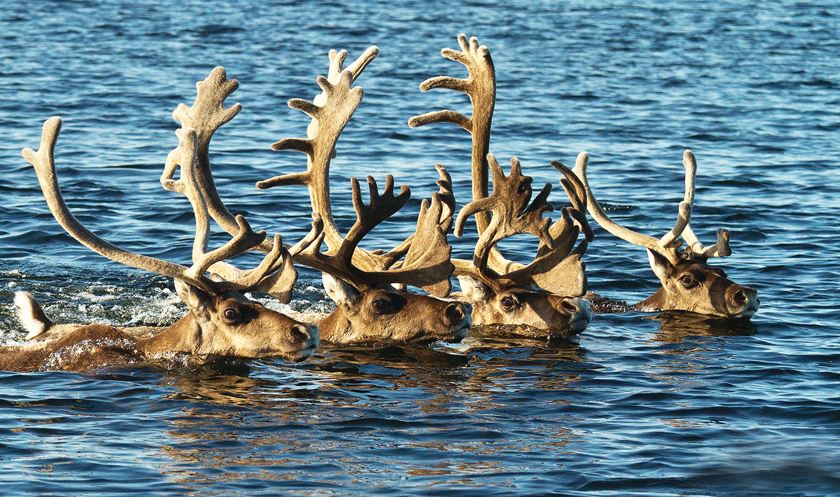
Arctic Haven hasn’t abandoned angling altogether. “With our guests it’s been very popular to combine half days of fishing,” Tessum says. “And it’s exceptional fishing. I was fly-fishing for grayling waist-deep in the afternoon and we caught about 40 grayling in two hours. But at the same time, I had 60 caribou walk up to the edge of the river and they’re looking at me when I’m fishing… And then we hopped back in the boats, went to an area where we knew there were some grizzly bear sightings. In a day, we went fly fishing, we saw a big huge herd of caribou walk right up to us… saw a grizzly bear, saw an amazing historical site, and came back for dinner with a glass of wine.”
And regardless of the market, lodge owners will continue doing what they love. The Weber family has spent decades in the Arctic and their focus has always been witnessing wildlife and going to remote places. “The reality was we wanted to do more than just fish. I love fishing, it’s amazing, but I’m not going to spend a week straight fishing for eight hours a day. At the end of the day, tourism is something you do because you love it. It’s not private investing or something because you’ve got the sharp mind for it. It’s a passion, it’s a labour of love.”
Yoder and Dul didn’t buy Hearne Lake Lodge as a hard-nosed business decision. They had babysat it for years before the previous owners put it up for sale. “Once we got into the territories and started fishing Great Slave, there was just no going back. The waters up here are like nowhere else,” says Yoder. “ We were always in the service industry, so we combined our fishing with our enjoyment of seeing people with happy faces.”
And the serious angler need not fret. Guides are still veterans of the lakes they fish. They know every shoal and secret spot—they will make sure guests land their trophy. One thing will not change: the Northern lodge is mecca to any angler.

